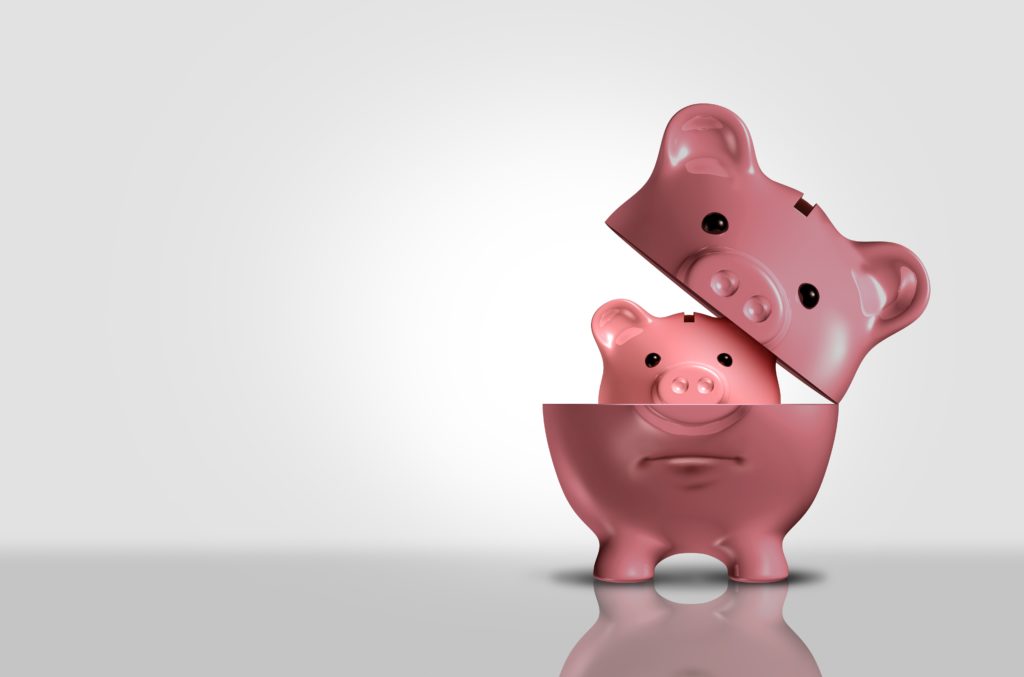Australians are progressively getting less bang for their buck at the supermarket as companies steadily downsize their products while keeping prices stagnant. The sneaky move, experts term as “shrinkflation”, is a way companies can increase the price of their products without having to alter the price tag.
Background – shrinkflation
No, you do not imagine it – food is shrinking.
We have all experienced the shrinkflation phenomenon even if we didn’t know the correct term.
One day you attend the shopping centre you have been frequenting for years and your favourite treat, a packet of jelly snakes or a block of chocolate, seems to have less in it, yet the price has stayed the same or increased. There may not be as much pasta in the usual pack, or manufacturers have cut the weight of a cereal box.
The slight changes in the product sizes mean customers are less likely to notice the reduction, with packaging essentially still looking the same, leading to customers paying more for what they get.
Shrinkflation doesn’t begin and end with packaged goods. Service and hospitality providers, such as theme parks, restaurants and hotels, are feeling even more pressure to find creative strategies to preserve their margins. Covid lockdowns severely dented sales and consumer demand for their products. Revenue is rebounding, assisted by widespread price hikes, but these companies can ill-afford to alienate their guests.
Such businesses are now adopting creative alternatives to pass on costs or boost profits. That may require providing less for the same price or tacking on new fees.
That discontent leaves companies clambering to sell these product and service changes as something more moral. Cadbury owner Mondelez stressed that a cut to the size of Wispa chocolate bars in its multipacks was a facet of a “proactive strategy to help tackle obesity”. Gatorade, owned by PepsiCo, has said the 14% reduction in the size of its sports drink bottles was a component of a redesign to make them “more aerodynamic” and “easier to grab”. Hyatt (along with most other hotel chains) touts efforts to eliminate small bottled amenities and encourage towel reuse to cut its carbon footprint. All three claims appear to be accurate, but common sense dictates that the associated cost savings were not irrelevant.
Shoppers may now notice they’re not getting as much for their money as before, but businesses have been dabbling in shrinkflation for decades.
University of Southern Queensland economics and finance expert Peter Phillips said there were multiple reasons for the cost-saving strategy, but the result was the same.
“It all stems from a vicious inflation cycle,” Dr Phillips said.
Inflation and shrinkflation
Inflation is everywhere. Labour shortages, supply chain bottlenecks and rising post-pandemic demand were already pushing up costs. Now Russia’s invasion of Ukraine is squeezing the supply of food and energy.
Price hikes are expected to worsen as the war in Ukraine goes on, affecting supply chains around the world.
There are several reasons why shrinkflation occurs. Some of the most common reasons include:
- Increased Costs: The cost of manufacturing and ingredients makes it more extortionate for brands to produce their products.
- Competition: Increased competition in the market can lead to companies needing to maintain or reduce their prices to preserve their market share.
- Changing demands: Trends and demand for products can change rapidly which may pressure companies to reformulate their products which, sequentially, can lead to size changes.
The price change is attributed to the increased production and distribution costs due to things like the rising price of oil.
Shrinkflation is an alternative to increasing prices in line with market inflation or due to rising manufacturing costs. Consumers can realise when brands raise their prices. Shrinkflation downsizes the packaging and products. Meaning that everyday products decrease in size or quantity while their prices remain unchanged.
In some cases, shrinkflation may be in need of reformulating of offerings or reducing quality. However, it is usually less evident to consumers than a price hike.
Effects Of Shrinkflation
Shrinkflation can have several contrasting effects on both companies and consumers.
For Consumers:
Shrinkflation brings about hidden inflation as the price of a product doesn’t change, but the quantity does. Making it more arduous for consumers to track what they are missing and even leading to a feeling of being cheated.
For Companies:
Companies often argue that shrinkflation is required to maintain their products’ quality. However, when done without appropriate communication and explanation to the consumers, it can lose trust between the company and the consumer. It can also lead customers to purchase products from competitors in some cases.
Advantages Of Shrinkflation
There are several advantages that come with shrinkflation.
- More Affordable: In some cases, products may be reduced in size but not in price to make to maintain affordibility for customers.
- Maintained profits: Although the product’s size is reduced, companies can still maintain or increase their profit margin via shrinkflation.
Disadvantages Of Shrinkflation
There are also several disadvantages to shrinkflation.
- Unfair practice: When a product’s size is reduced without any change to the quality or ingredients, consumers see it as an unfair practice.
- Loss of trust: When companies do not adequately communicate with their consumers about why a product is shrinking, it can result in a loss of trust for the consumer.
- Competition: In some cases, companies may shrink their products to undercut the prices of their competitors, leading to a reuction race that is not good for either consumers or companies.
How Can Consumers Combat Shrinkflation?
Savvy shoppers can combat shrinkflation by following these suggestions even on their favourite brands.
Do the Math
It’s time to crunch numbers, this time using unit pricing.
Because manufacturers are applying shrinkflation and increased pricing at different rates, it can pay off for the customer to compare the price per unit among competing brands.
It is not too complicated to do either. With a couple of clicks on a phone calculator, consumers can compare the cost per ounce, pound, gram or litre among brands to find the best value for their family.
Making purchase choices using unit pricing to establish the best deal when assessing different packaging designs is the foremost way consumers can bypass shrinkflation and save.
Purchase Less Pre-Packaged Foods
Foods that are not pre-packaged, for example a dozen eggs or a single orange, are not as susceptible to shrinkage. As a result, any price increases will be more apparent.
Buy in Bulk
An alternative option, if your family’s budget can afford it, is to buy in larger quantities, subsequntially lowering the cost per unit.
Stock Up When There’s a Sale
A significant sale makes it worthwhile stocking up on your favourite items. Check the clearance bin aisles to see if there are any other discounted goods where you can score a great deal.
Shop Around
If your favourite product has downsized, it’s time to shop around. Consumers may contemplate visiting competitors instead of their usual grocery store chain.
Consumers may also look into purchasing store brands over name brands. Rose said store brands are often the final products to experience shrinkflation and may be able to offer a few ounces more of precisely what you need.
Vogue Advisory Group – keeping you up to date with the latest market tips and tricks
We help you be prepared for and aware of the change. Whether that’s inflation, shrinkflation or even positive changes like freebies and sales. Being prepared is an effective way to stay on top of your finances, save money and put yourself in a stonger position for the future. If you have questions or concerns about the market, please contact us.

